
Ashridge is a country estate and stately home in Hertfordshire, England. It is situated in the Chiltern Hills, an Area of Outstanding Natural Beauty, about 2 miles (3.2 km) north of Berkhamsted and 23 miles (37 km) north west of London. The estate comprises 5,000 acres (20 km2) of woodlands, commons and chalk downland which supports a rich variety of wildlife.

Anglesey Abbey is a National Trust property in the village of Lode, 5+1⁄2 miles (8.9 km) northeast of Cambridge, England. The property includes a country house, built on the remains of a priory, 98 acres of gardens and landscaped grounds, and a working mill.
Ellastone is a village in the East Staffordshire borough of Staffordshire, in the West Midlands of England. It is on the Staffordshire side of the River Dove and is directly opposite the village of Norbury in Derbyshire. It is between Uttoxeter and Ashbourne.
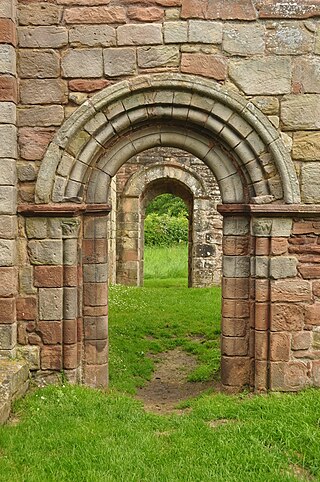
White Ladies Priory, once the Priory of St Leonard at Brewood, was an English priory of Augustinian canonesses, now in ruins, in Shropshire, in the parish of Boscobel, some eight miles (13 km) northwest of Wolverhampton, near Junction 3 of the M54 motorway. Dissolved in 1536, it became famous for its role in the escape of Charles II of England after the Battle of Worcester in 1651. The name 'White Ladies' refers to the canonesses who lived there and who wore white religious habits.
Saint Mary's Abbey in Colwich, Staffordshire was an abbey of Roman Catholic nuns of the English Benedictine Congregation, founded in 1623 at Cambrai, Flanders, in the Spanish Netherlands, and closed down in 2020. During the French Revolution, the community was expelled from France and settled at Mount Pleasant, Colwich, in 1836, where it remained for the next 84 years.

Penwortham Priory was first a Benedictine priory and, after the Dissolution of the Monasteries, a country house in the village of Penwortham, near Preston, Lancashire. The house was demolished as the village expanded into a town and a housing estate has replaced the mansion house and its grounds of which no trace remain.

Wootton Lodge is a privately owned 17th-century country house situated at Wootton near Ellastone, Staffordshire, England. It is a Grade I listed building.

Ingress Abbey is a Neo-Gothic Jacobean-style country house in Greenhithe, Kent, England, built in 1833 on the site of an earlier Palladian-style house.

Farewell Priory was a Benedictine nunnery near Lichfield in Staffordshire, England. Although it received considerable episcopal support, it was always small and poor. It was dissolved in 1527 as a by-product of Cardinal Wolsey's scheme to establish a college within Oxford University.
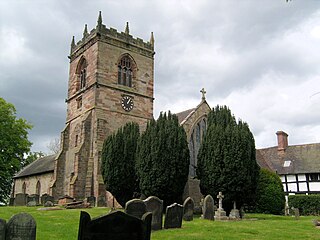
Lapley Priory was a priory in Staffordshire, England. Founded at the very end of the Anglo-Saxon period, it was an alien priory, a satellite house of the Benedictine Abbey of Saint-Remi or Saint-Rémy at Reims in Northern France. After great fluctuations in fortune, resulting from changing relations between the rulers of England and France, it was finally dissolved in 1415 and its assets transferred to the collegiate church at Tong, Shropshire.
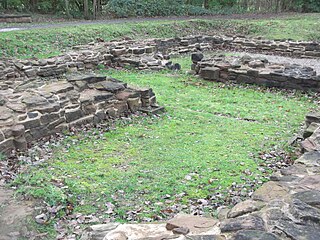
Sandwell Priory was a small medieval Benedictine monastery, near West Bromwich, then part of Staffordshire, England. It was founded in the late 12th century by a local landowner and was only modestly endowed. It had a fairly turbulent history and suffered considerably from mismanagement. It was dissolved in 1525 at the behest of Cardinal Wolsey – more than a decade before the main Dissolution of the Monasteries under Henry VIII.

Black Ladies Priory was a house of Benedictine nuns, located about 4 km west of Brewood in Staffordshire, on the northern edge of the hamlet of Kiddemore Green. Founded in the mid-12th century, it was a small, often struggling, house. It was dissolved in 1538, and a large house was built on the site in Tudor and Jacobean styles by the Giffard family of Chillington Hall. Much of this is incorporated in the present Black Ladies, a large, Grade II*-listed, private residence.
Aldcliffe Hall was a 19th-century country house, now demolished, which replaced a previous mediaeval building, on the bank of the Lune estuary in Aldcliffe, Lancashire, England.
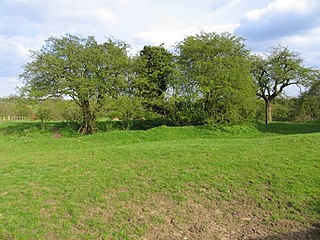
Brooke Priory was a minor house of Augustinian monks in Brooke, Rutland. It was a cell of St Mary's Abbey, Kenilworth.
Wombridge Priory was a small Augustinian monastery in Shropshire. Established in the early 12th century, it was supported by a network of minor nobility and was never a large community. Despite generally good financial management, it fell within the scope of the Suppression of Religious Houses Act 1535 and was dissolved in the following year.
Tittesworth is a civil parish in the Staffordshire Moorlands, in Staffordshire, England. It extends from the edge of the town of Leek in the south-west to Blackshaw Moor in the north-east. In the east is the village of Thorncliffe. To the west is the civil parish of Leekfrith, where the boundary is the River Churnet.To the east is the civil parish of Onecote. Tittesworth Brook runs westwards through the area from Thorncliffe, and flows into the Churnet.

Bernard Granville of Birdcage Walk, Westminster, and Apps Court, Walton-on-Thames, Surrey, a member of an ancient and prominent Westcountry family, was a courtier of King Charles II who served as a Member of Parliament for several Cornish constituencies.
Ellastone is a civil parish in the district of East Staffordshire, Staffordshire, England. It contains 33 buildings that are recorded in the National Heritage List for England. Of these, three are listed at Grade II*, the middle grade, and the others are at Grade II, the lowest grade. Historically, the most important building in the parish was Calwich Abbey, a priory that has been demolished and replaced by a country house, which is listed together with associated strictures in the surrounding parkland. The parish contains the village of Ellastone and the surrounding countryside. Here, most of the listed buildings are houses, cottages, farmhouses and farm buildings. The other listed buildings include a church, bridges, and two mileposts.
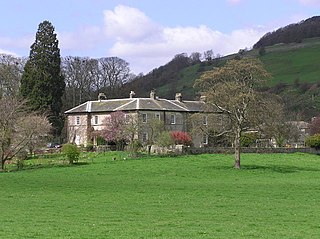
Ellerton AbbeyHouse is an historic building and estate in Ellerton Abbey, North Yorkshire, England. It was built around 1830 for the Fore Erle-Drax family, and has been designated a Grade II listed building by Historic England. The property is located at the end of a long driveway off the northern side of the B6270 Richmond Road, about 450 feet (140 m) southwest of Ellerton Priory, now ruined.















